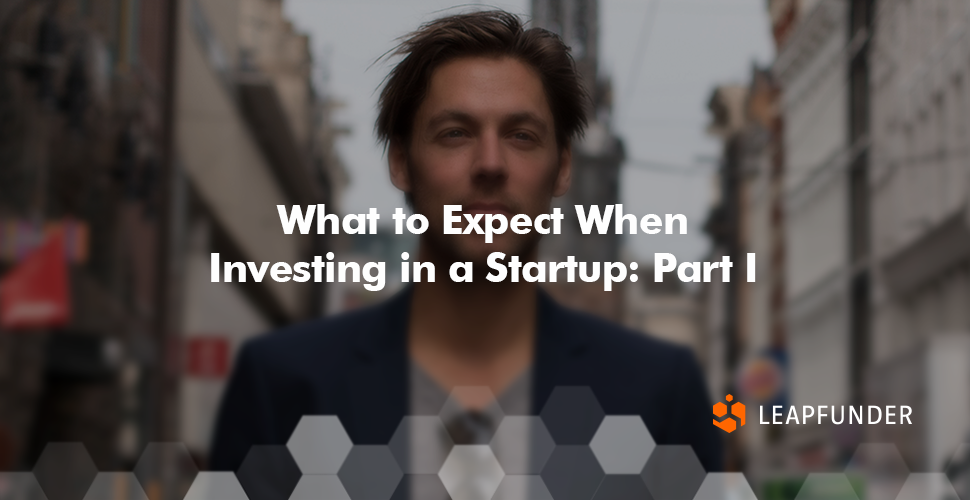Dear Investor,
This blog is part 1 of a step-by-step description of what will happen over time when you decide to invest in a startup with a convertible on Leapfunder. (Leapfunder is just a form of regular angel investing, so many of the points made here are generally applicable.)
My previous blog, 7 tips for first-time startup investors, gives an overview of what to look out for when making your first startup investment decision and is a useful read for novice startup investors.

Expectations when investing in a Startup with a Leapfunder Convertible
The First Step: The Execution Phase
Congratulations! You have chosen which startup to invest in and have entered the exciting world of angel investing. Now you first need to make the investment; this is the execution phase.
To invest online, you will go into the online dataroom and follow the simple steps such as filling in the total investment amount, basic personal information and confirming you have read and accepted all required information. Remember that the investment will have to be personalized, as only a single person/entity can be the formal owner of one convertible.
Your investment is anonymous to the general public. Only the startup will be able to know who/how much has been invested. After you have completed the investment process a chartered accountant will check all the records before you receive your convertible.
You are now a convertible holder! The real fun is about to begin.
What’s Next: The Convertible Holder Phase
So now you’re a convertible holder, what does this mean?
You have just signed an agreement with a startup: you have committed capital to the startup, which they will use for all activities mentioned in their information memorandum. They can spend it on whatever they need to make the startup as successful as possible.
What do you get?
A convertible is in principle security which has the potential to become equity. With your money you have bought a convertible: it’s a thing that you own and can even sell again to another party, though this is rare.
What happens day to day?
You have the right to receive a monthly update summing up the startup’s progress. Information sharing is vital to the relationship between investor and startup. You can sit back, relax and read these newsletters or you can get more involved. In practice, when angels invest in a startup they often start working for the company in one way or another; becoming a mentor, lecturing on a speciality of their field and opening their network of people of interest.
For instance, accountants or financial specialists will guide the startup with budget or pricing mechanisms, marketing experts explain traditional marketing and growth hacking, HR specialists help the startups hire new staff. Remember, Angel Investor, this is your investment and your involvement can directly make or break the success of the startup.
Can you get out?
An investor can sell the convertible at any time by finding a buyer, obtaining approval from the startup and settling upon a price. In practice this almost never happens, because there aren’t that many buyers out there and the big benefits usually only happen after the convertible has converted.
At last: the Qualifying Event Phase
Let us assume you do sell your convertible and the startup you invest in is successful! Then, sooner or later, a ‘qualifying event’ will happen.
The ‘qualifying event’ is the event that causes the convertible to be transformed into shares. What conversion means: the convertible will cease to exist and the Angel Investors will receive shares in return. These shares will normally be placed into a Special Purpose Vehicle (SPV).
The valuation of the startup is not set from the start. Rather, the convertible postpones the final valuation to this qualifying event. The qualifying event is some event that makes it clear what the market price of the shares is. The qualifying event generally occurs between 1,5 to 3 years after the convertible has been issued. The terms of the convertible define exactly what events can count as a qualifying event, but usually it is a larger equity investment round in which professional investors have taken a clear stance about the valuation.
Apart from a large equity investment there are some other events that can be taken as a qualifying event. The Leapfunder convertible uses the three most standard qualifying events, which are:
1. The next funding round
When a startup attracts an investor investing cash for equity, it is considered a qualifying event. Not every equity investment round will count: the size of the investors has to be large enough so that they are credible as professional investors. The standard Leapfunder convertible contract requires that there is at least one investor investing E100k in cash for an unambiguous share price. If a funding round is concluded that meets these criteria then the share price from that round will be used the conversion. Of course, the convertible investors get some additional benefits like a Discount, Interest and Cap, so they effectively get a much lower share price.
2. Acquisition
When another company or large investor purchases the whole startup, a majority of the shares, or all its key assets, it is considered a qualifying event. This is sometimes called a ‘change of control’. During such a change of control a valuation of the shares occurs because you can see what price is being offered for the assets or the shares. Based on this price the conversion can be carried out. That usually also means that the convertible holders instantly make their exit, as they get their shares those shares are being sold to the new owner of the company.
3. Final conversion date
If there is no qualifying event because of an equity investment or a change of control, then another type of qualifying event is present in the convertible for safety. After all: if the above qualifying events never happen the convertible might simply increase in value with the interest indefinitely, without converting into shares. As an investor, this is clearly not what you want.
One reason this could happen is that the startup becomes cash positive with relatively little funding, and want to remain independent rather than being bought. For this reason, a convertible will often contain a final conversion date, at which point the convertible is automatically converted into shares. Of course, at this point, there is no acquisition or funding round from which valuation can be taken. The Leapfunder convertible offers the opportunity to negotiate the share price with the Leapfunder investors as a group first. (The investors can vote on proposals online.) If this fails then an external referee is asked to come in to set a valuation in a fairness opinion.

After conversion the Leapfunder convertible normally makes sure the investors are pooled via an SPV. In the second part of the blog we will explore topics such as what happens in the ‘SPV phase’, and the ‘exit phase’. With all that you will be on your way to being an expert investor!
Sign up for Leapfunder to discover promising startups and learn more about funding via convertible notes:



